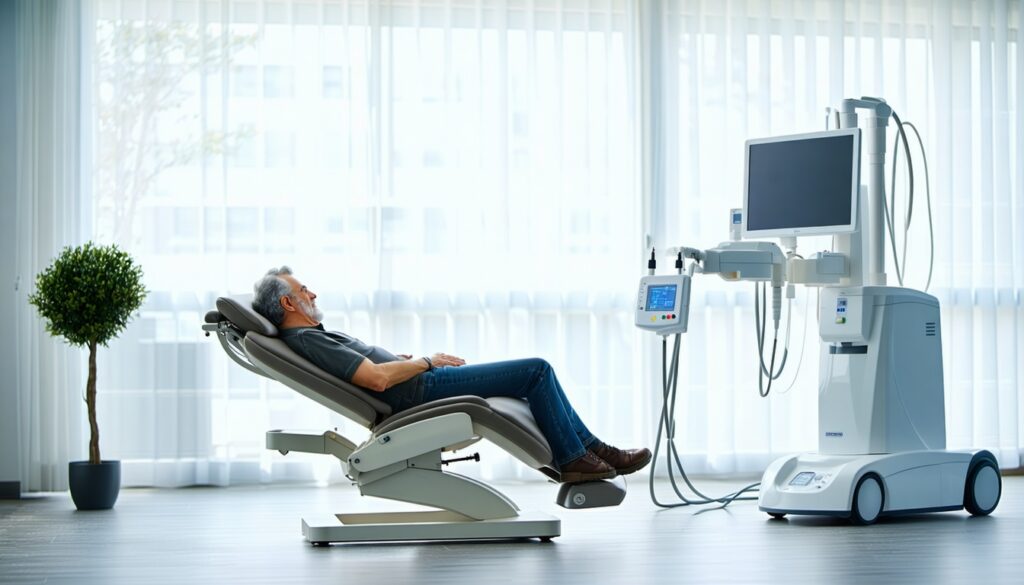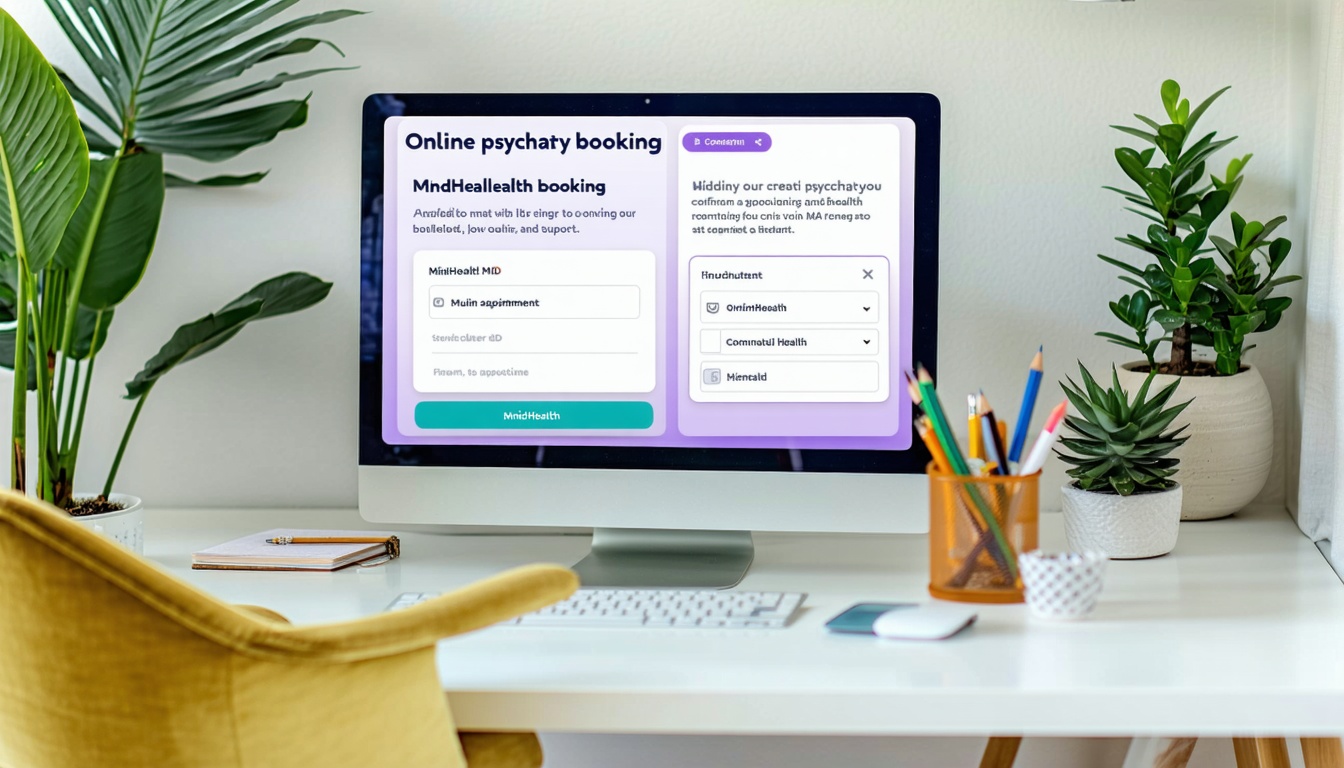Understanding TMS Therapy
Defining Transcranial Magnetic Stimulation
Transcranial Magnetic Stimulation (TMS) is a noninvasive therapy that utilizes magnetic fields to stimulate nerve cells in the brain. This innovative treatment is particularly effective for individuals suffering from major depressive disorder (MDD), especially those who have not responded well to traditional medication. TMS involves the use of electromagnetic induction to excite neuronal cells, promoting changes in brain activity associated with mood regulation. Typically, therapy sessions are repeated daily for four to six weeks, allowing for optimal results and improvements in depressive symptoms.
FDA Approval for TMS
TMS therapy was approved by the U.S. Food and Drug Administration (FDA) for the treatment of major depressive disorder in 2008. Since then, it has emerged as a valuable option for patients resistant to conventional antidepressant medications. The approval of the Brainsway Deep TMS helmet in 2013 further extended the application of TMS for various conditions, showcasing minimal side effects alongside effective results for severe, treatment-resistant depression.
In addition to MDD, TMS is now recognized for its potential benefits in treating obsessive-compulsive disorder (OCD), migraines, and aiding individuals in quitting smoking when standard treatments are inadequate. This advancement in TMS therapy represents a significant milestone in the realm of mental health treatment, offering hope to those seeking alternative options for managing their symptoms. For more information on the benefits of TMS, explore our details on TMS for major depressive disorder.
Benefits of TMS for Depression
Transcranial Magnetic Stimulation (TMS) offers significant advantages for individuals grappling with major depressive disorder. Understanding the success rates and personalized treatment plans can help you make informed choices about your mental health care.
Success Rates of TMS Therapy
Recent studies indicate that TMS therapy boasts a high success rate for treating major depressive disorder. Approximately 50% to 55% of patients who have not benefited from traditional medications show a positive response to TMS. Notably, about one-third of these individuals experience full remission, meaning their symptoms disappear completely.
Further research highlights that remission rates for TMS in patients with major depression range from 30% to 35%. TMS effectively targets the dorsolateral prefrontal cortex (DLPFC), allowing for better management of behavioral dysregulation associated with depression. The results of daily TMS sessions aimed at the left prefrontal cortex have shown consistent effectiveness, leading to sustained mood improvements, particularly important for those exploring drug-free depression treatment.
| Study | Response Rate | Remission Rate |
|---|---|---|
| Multiple Studies | 50% – 55% | 30% – 35% |
| PrairieCare Clinical Results | 60% reduce symptoms by 50% | 40% achieve symptom reduction |
Tailored TMS Treatment Plans
One of the most appealing aspects of TMS is the ability to create tailored treatment plans that suit your specific needs. Your therapy provider will assess your unique situation, which allows for customized treatment timelines and frequencies. This personalized approach helps enhance the efficacy of TMS therapy while minimizing potential side effects, making it a promising option for those seeking alternatives to traditional treatments such as antidepressants.
With a TMS treatment center, you can expect professionals to monitor your progress closely and make adjustments as needed to your treatment plan. This flexibility ensures that you receive the most effective care possible. Whether you are dealing with major depressive disorder or exploring TMS for other conditions like TMS for PTSD or TMS for OCD, having a tailored plan allows for optimized results.
TMS provides an innovative, non-invasive option for depression management that prioritizes your mental well-being. If you’re considering treatment, don’t hesitate to reach out for a first-time TMS consultation to discuss your options.
Effectiveness of TMS for Major Depression
Transcranial Magnetic Stimulation (TMS) therapy has emerged as a promising treatment option for individuals suffering from major depressive disorder. This section focuses on how TMS targets specific areas of the brain and the types of stimulation used in therapy.
Targeting DLPFC for Treatment
TMS specifically targets the dorsolateral prefrontal cortex (DLPFC), a region of the brain that is often found to be dysregulated in individuals with major depression. By stimulating this area, TMS seeks to restore balance and improve mood. Studies indicate that response rates to TMS range from 50% to 55%, with remission rates between 30% and 35% for those with major depressive disorder.
Here is a summary of the effectiveness metrics for TMS treatment:
| Outcome Measure | Rate (%) |
|---|---|
| Response Rate | 50 – 55 |
| Remission Rate | 30 – 35 |
High-Frequency vs. Low-Frequency Stimulation
TMS employs both high-frequency and low-frequency stimulation techniques, each serving different therapeutic purposes. High-frequency stimulation of the left DLPFC has been shown to alleviate depressive symptoms, while low-frequency stimulation of the right DLPFC is helpful in relieving symptoms of both depression and anxiety.
Daily TMS therapy primarily focused on the left prefrontal cortex has demonstrated effective results with remission rates ranging from 30% to 40% in depressive mood symptoms [1].
| Stimulation Type | Target Area | Intended Effect |
|---|---|---|
| High-Frequency | Left DLPFC | Alleviates depressive symptoms |
| Low-Frequency | Right DLPFC | Relieves depression and anxiety symptoms |
Utilizing TMS for major depressive disorder can be a transformative approach, especially when guided by experts in the field. For more information on how TMS works, you can read about transcranial magnetic stimulation therapy and find out why MindHealth MD is an industry leader in TMS services.
TMS Safety and Side Effects
Transcranial Magnetic Stimulation (TMS) is recognized as a safe and well-tolerated treatment option for major depressive disorder. Understanding the potential side effects can help you make an informed decision about your mental health care.
Common Side Effects of TMS
Most individuals undergoing TMS experience only mild side effects. These effects typically resolve quickly and are less intrusive compared to those associated with traditional antidepressants. The most frequently reported side effects include:
| Side Effect | Description |
|---|---|
| Headaches | Mild and usually temporary. |
| Scalp Discomfort | Sensitivity in the area where the coil is applied. |
| Fatigue | A feeling of tiredness post-session. |
| Facial Muscle Tingling | Brief sensations during stimulation. |
| Lightheadedness | Occasional dizziness experienced shortly after treatment. |
These side effects generally do not prevent patients from continuing with their TMS sessions and can often be mitigated with proper adjustments made by your treatment provider.
Rare but Serious Side Effects
While TMS therapy is largely safe, there are some rare but serious side effects that you should be aware of. Although these occurrences are uncommon, recognizing them can help ensure your safety:
- Seizures: A rare complication that can occur, particularly in individuals with a history of seizures or certain neurological conditions.
- Hearing Loss: Potentially related to the loud sound produced during treatment; however, this is typically preventable with proper ear protection.
It is important to discuss your individual risk factors with your provider, especially if you have a history of neurological conditions. Regular monitoring and a thorough assessment will be conducted to ensure the best outcomes during your TMS treatment [6].
By choosing TMS for major depressive disorder, you can explore a treatment method that has shown promising results with minimal risks, allowing you to focus on your mental health journey. For more information on TMS and its applications, consider visiting our TMS treatment center or learn more about non-invasive depression treatment options.
Clinical Trials and Research
Evolution of TMS Therapy Studies
Research on Transcranial Magnetic Stimulation (TMS) therapy for treating major depressive disorder has progressed significantly. TMS has shown a high success rate for individuals who have not benefited from traditional medication, with over half of these patients responding favorably to TMS treatment. Approximately one-third of those treated experience complete remission, effectively having their symptoms eliminated entirely.
Several studies highlight the effectiveness of TMS. Daily sessions directed at the left prefrontal cortex have demonstrated remission rates of 30% to 40% among patients with major depression. These results align closely with the mood improvements typically seen with antidepressants, but TMS has been associated with fewer side effects.
A randomized multicenter trial revealed that TMS produced significant antidepressant effects, reporting remission rates four times higher than those achieved with placebo. Another multicenter observational study involving 307 patients indicated a marked decrease in scores on the depression severity scale following TMS treatment, and these therapeutic responses were maintained over time.
Mechanisms of TMS Effectiveness
The underlying mechanisms contributing to the effectiveness of TMS in treating depression involve various neurobiological changes. Studies suggest a correlation between cerebral metabolic activity and positive treatment outcomes. TMS is believed to enhance synaptic plasticity, which is crucial for learning and memory, thereby facilitating sustained improvement in mood even after treatment ends.
Additional research indicates that TMS alters cortical activity, helping to normalize abnormal brain function often associated with depression. As the brain recalibrates its activity levels, patients may experience a prolonged improvement in mood and a reduction in depressive symptoms.
You can find more detailed information on the effectiveness of transcranial magnetic stimulation therapy and how TMS can serve as a drug-free depression treatment as part of your journey toward better mental health. For those interested in exploring treatment options, consider visiting our TMS treatment center to learn about personalized plans tailored just for you.
TMS Compared to Other Treatments
Evaluating the options available for treating major depressive disorder can help you make informed decisions regarding your mental health. This section compares TMS (Transcranial Magnetic Stimulation) with two common treatments: antidepressants and Electroconvulsive Therapy (ECT).
TMS vs. Antidepressants
TMS therapy is increasingly recognized as an effective alternative to traditional antidepressants. While both TMS and antidepressants aim to relieve symptoms of depression, they work through different mechanisms.
| Treatment Method | Key Features | Common Side Effects | Effectiveness |
|---|---|---|---|
| TMS | Non-invasive; targets brain areas associated with mood | Mild headaches, scalp discomfort, fatigue, facial muscle tingling | Remission rates are four-fold higher than placebo [1] |
| Antidepressants | Medication-based; works systemically | Weight gain, sexual dysfunction, nausea, insomnia | Varies per individual; often takes weeks to feel benefits |
TMS is generally well-tolerated, with fewer side effects compared to antidepressants, which can lead to more serious or long-term adverse effects [4]. The effectiveness of TMS for major depressive disorder has been supported by numerous studies, indicating that it significantly improves symptoms versus placebo [1]. TMS requires a series of sessions, typically five times a week over three to six weeks, and can provide immediate relief, unlike many antidepressants that require weeks to take effect.
TMS vs. Electroconvulsive Therapy
Electroconvulsive Therapy (ECT) has been a longstanding treatment option for severe depression, particularly for individuals who do not respond to other therapies. However, TMS offers a more modern, non-invasive approach.
| Treatment Method | Key Features | Common Side Effects | Effectiveness |
|---|---|---|---|
| TMS | Outpatient, non-invasive; no sedation required | Mild headaches, scalp discomfort, fatigue, facial muscle tingling [4] | Significant improvement in depression symptoms [1] |
| ECT | Requires sedation; involves brain stimulation | Memory loss, confusion, headache, body aches | Highly effective for severe cases, but varies significantly by individual |
While ECT is effective and can bring rapid results, it often comes with risks such as memory loss and the need for sedation, making it more intrusive than TMS [7]. TMS, on the other hand, is a straightforward procedure that does not require anesthesia and has a lower risk profile.
Choosing between TMS, antidepressants, and ECT depends on personal preferences, medical history, and past treatment experiences. Consulting with a mental health professional can help determine the best approach tailored to your needs. For information on tms for treatment resistant depression, consider reaching out to your local TMS treatment center for guidance.








